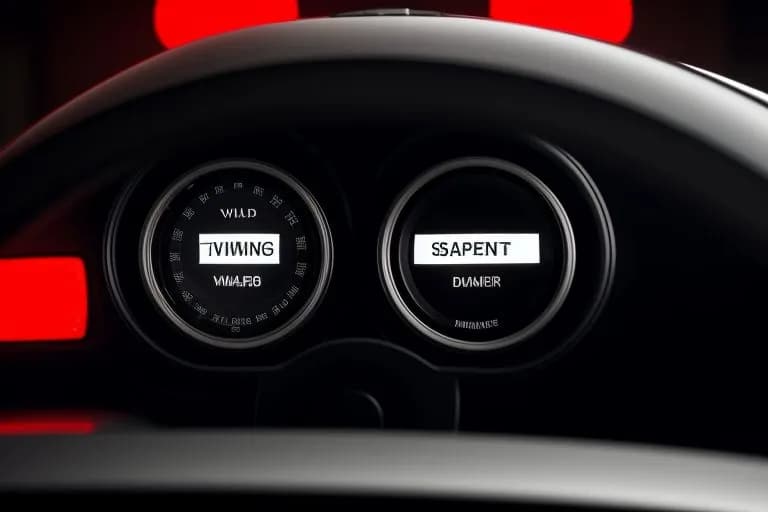What Is Ground Clearance and Why Is It Important?
Learn the meaning of ground clearance in cars, why it matters, and how it impacts performance and safety. Explore SUVs with the highest ground clearance and tips for modification.
What Is Ground Clearance and Why Is It Important?
Ground clearance, also known as ride height, is the distance between the lowest point of a vehicle's undercarriage and the ground. It’s a critical specification that determines a car’s ability to navigate rough terrains, speed bumps, and obstacles safely. Understanding ground clearance meaning is essential for choosing the right vehicle for your needs, whether you prioritize off-roading, urban driving, or a combination of both.
In this guide, we’ll delve into what ground clearance means for different vehicles, explore the benefits of high ground clearance, and provide tips for measuring and modifying it for your specific requirements.
The Basics of Ground Clearance
Ground clearance is a fundamental aspect of vehicle design. It affects the way a car handles, its fuel efficiency, and its ability to clear obstacles. Typically, SUVs and trucks feature higher ground clearance than sedans and sports cars, making them suitable for uneven terrains. Conversely, cars with lower ground clearance offer better stability and aerodynamics, which are ideal for high-speed driving.
Manufacturers measure ground clearance from the lowest fixed point on the car, often excluding parts like mudflaps. This measurement can vary based on the vehicle's load, tire size, and suspension setup, so it’s crucial to check the specifications for your specific model.
The Role of Ground Clearance in Off-Roading
When it comes to off-roading, ground clearance is a key factor. Vehicles with high ground clearance are better equipped to tackle rugged trails, steep inclines, and rocky surfaces. Higher clearance minimizes the risk of damaging the undercarriage or getting stuck. For example, the highest ground clearance SUVs often feature reinforced skid plates and advanced suspension systems to handle tough conditions.
Off-road enthusiasts should look for SUVs or trucks with adjustable suspension systems, as these allow drivers to increase clearance when needed, ensuring safe and efficient navigation through challenging environments.
Additional Benefits of Increased Ground Clearance
Beyond off-roading, increased ground clearance offers numerous advantages:
- Improved Visibility: Higher ride heights provide a better vantage point, allowing drivers to see further ahead on the road.
- Flood Resilience: Vehicles with higher ground clearance are less likely to sustain damage when driving through waterlogged areas.
- Enhanced Versatility: A car with high ground clearance can switch seamlessly between urban roads and rural trails.
However, it's important to note that higher clearance may compromise aerodynamics and fuel efficiency, so choosing the right balance for your driving needs is essential.
Modifying Your Vehicle’s Ground Clearance
Adjusting ground clearance is a popular modification among off-road enthusiasts and drivers seeking personalized performance. Modifications generally fall into two categories:
How to Measure Your Vehicle’s Ground Clearance
To measure your car’s ground clearance, follow these steps:
- Park the vehicle on a level surface.
- Locate the lowest fixed point of the undercarriage.
- Use a ruler or tape measure to determine the distance from the ground to this point.
For accurate results, ensure the car is unloaded and equipped with the tires specified by the manufacturer. Refer to the vehicle’s manual for specific measurement details.
How to Adjust Your Vehicle’s Ground Clearance
Ground clearance adjustments can be achieved through several methods:
- Lift Kits: Popular among SUV and truck owners, lift kits increase clearance by raising the suspension system.
- Larger Tires: Upgrading to larger tires can boost clearance while enhancing off-road performance.
- Air Suspension: Vehicles with air suspension systems allow for on-the-fly clearance adjustments, offering flexibility for various terrains.
Always consult a professional mechanic to ensure modifications are safe and compliant with local regulations.
Other Important Overlanding Modifications
Ground clearance is just one aspect of overlanding vehicle preparation. To optimize your car for long expeditions, consider the following:
- Skid Plates: Protect the undercarriage from debris and rough surfaces.
- All-Terrain Tires: Enhance grip and durability on off-road trails.
- Roof Racks: Increase storage capacity for gear and supplies.
Pair these upgrades with adequate clearance to maximize your vehicle’s off-road capabilities.
Ground Clearance and Vehicle Safety
Ground clearance plays a critical role in a vehicle's safety. Vehicles with extremely low ground clearance are more prone to scraping the undercarriage on speed bumps, curbs, or uneven road surfaces, potentially damaging key components such as the exhaust system or oil pan. On the other hand, cars with high ground clearance can become top-heavy, leading to a higher risk of rollover during sharp turns or at high speeds.
Modern cars address these safety concerns by incorporating technologies like electronic stability control (ESC) and advanced suspension systems, which help maintain balance and mitigate risks associated with both high and low ground clearance configurations.
Ground Clearance in Electric Vehicles
Electric vehicles (EVs) present unique challenges when it comes to ground clearance. Due to the placement of heavy battery packs beneath the floor, many EVs have lower ground clearance than traditional vehicles. While this improves stability and aerodynamics, it can make navigating uneven terrain or snow-covered roads difficult.
Manufacturers are addressing these challenges with innovations like adjustable air suspension systems in models such as the Tesla Model X, which allows drivers to raise the vehicle’s height when needed. For those who frequently drive on challenging terrains, selecting an EV with these features ensures a balance between efficiency and capability.
The Impact of Ground Clearance on Fuel Efficiency
Ground clearance has a direct impact on fuel efficiency. Vehicles with higher ground clearance experience increased air resistance due to their larger frontal area, which can reduce fuel economy. Conversely, low-clearance cars benefit from reduced drag, making them more fuel-efficient, especially at highway speeds.
However, advancements in automotive design, such as active grille shutters and underbody panels, help mitigate these effects. These features streamline airflow and enhance the aerodynamics of high-clearance vehicles, improving their overall fuel efficiency.
Seasonal Considerations for Ground Clearance
Ground clearance requirements can vary significantly depending on seasonal conditions. In snowy climates, higher ground clearance is advantageous as it prevents the car from getting stuck in deep snow or slush. Similarly, vehicles with low clearance may struggle on roads with accumulated debris or ice during winter.
For those living in areas with extreme weather, equipping the vehicle with season-appropriate tires and ensuring sufficient ground clearance can significantly enhance safety and performance.
Ground Clearance Comparisons: SUVs, Sedans, and Trucks
Different vehicle types have varying ground clearance levels tailored to their intended use. Here’s a quick comparison:
- SUVs: Typically offer 7-10 inches of ground clearance, making them suitable for off-roading and rugged terrains. Examples include the Jeep Grand Cherokee and Toyota RAV4.
- Sedans: Feature lower ground clearance, usually between 4-6 inches, prioritizing aerodynamics and road handling. Models like the Honda Accord and Toyota Camry fall into this category.
- Trucks: Provide the highest ground clearance, often exceeding 10 inches, for carrying heavy loads and traversing challenging landscapes. Examples include the Ford F-150 and Chevy Silverado.
Choosing the right type depends on your driving needs, with ground clearance being a key factor in the decision.
The Role of Ground Clearance in Vehicle Resale Value
Ground clearance can influence a vehicle's resale value. Cars with adjustable or optimal ground clearance are more versatile and attractive to potential buyers. For example, SUVs with adjustable suspension systems can appeal to both city drivers and off-road enthusiasts, widening the pool of interested buyers.
Maintaining the undercarriage and avoiding damage due to low clearance is essential for preserving resale value. Regular inspections and repairs ensure the vehicle remains in top condition, regardless of its ground clearance level.
Future Trends in Ground Clearance Technology
As automotive technology advances, manufacturers are introducing innovative solutions to enhance ground clearance adaptability. Adjustable air suspension systems are becoming increasingly common, allowing vehicles to shift between low-clearance settings for highways and high-clearance settings for off-road adventures.
Another emerging trend is smart suspension technology, which uses sensors and AI to automatically adjust the ground clearance based on road conditions. These advancements are poised to make vehicles safer, more efficient, and more versatile for a wide range of applications.
Our Services
Window Sticker
Print window sticker for your vehicle
VIN Decoder
Decode any vehicle manufacturer
Classic VIN Lookup
Decode VINs for classic and vintage vehicles
License Plate Lookup
Search license plate information
VIN Check
Decode any vehicle in US states
Build Sheet by VIN
Get detailed build sheet for your vehicle
Dealers
Unlimited vehicle history reports
Paint Code by VIN
Find your vehicle's exact paint color code
VIN Explorer
Explore detailed vehicle information by VIN
Warranty Check
Check warranty information by VIN
Vehicle Recalls
Understanding Vehicle Recalls: A Complete Guide

Ethan J. Caldwell
Ethan James Caldwell is a graduate of George Washington University (GW). Born and raised in Washington, Ethan has had a lifelong passion for cars, motorcycles, and all things automotive. From a young age, he was captivated by the mechanics, design, and culture surrounding vehicles, which eventually inspired his career. Ethan currently drives a silver 2005 Honda Accord, a testament to his appreciation for reliable and timeless vehicles.
Frequently Asked Questions
Ground clearance is the distance between the lowest point of a car's undercarriage and the ground. It impacts the vehicle’s ability to navigate obstacles and affects performance.
Ground clearance is vital for preventing undercarriage damage, especially on uneven terrains or during off-roading. It also influences the vehicle’s versatility and safety.
SUVs like the Jeep Wrangler, Toyota 4Runner, and Land Rover Defender are known for their high ground clearance, making them ideal for off-road adventures.
Yes, ground clearance can be increased using lift kits, larger tires, or adjustable air suspension systems. These modifications are common among off-road enthusiasts.
Ground clearance is measured from the lowest fixed point of a vehicle's undercarriage to the ground, typically with the car on a level surface and unloaded.
Our Blog Articles
Discover insights about vehicle history, maintenance, and buying guides

VIN Swap Meaning: What You Need to Know
Understand the VIN swap meaning, its risks, and how to protect yourself from fraud. Get the facts on swapped VINs and how to check vehicle history.

ABS and Traction Control Light On: What You Need to Know
Is your ABS and traction control light on? Learn the common causes, what to do, and how to keep your vehicle safe. Get expert advice on ChassisVIN.com.

Check Cars Owner: Find Owner Information Easily
Need to check cars owner? Use ChassisVIN.com to quickly find owner information, vehicle history, and more. Get peace of mind before buying or selling a car.